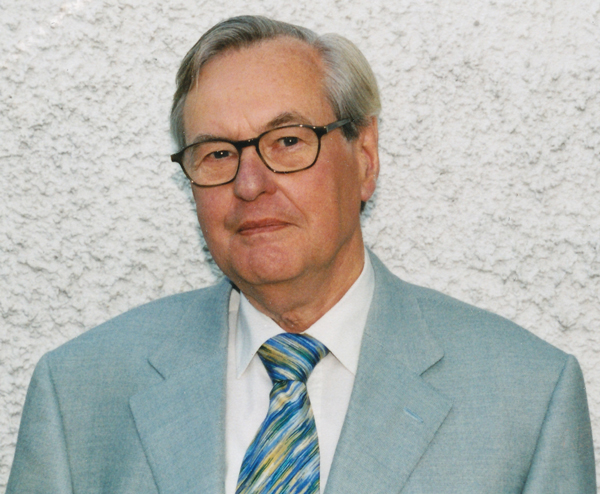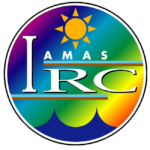Hans-Juergen Bolle (1929 – 2013)

Obituary
Hans-Jürgen Bolle (1929 – 2013)
Hans-Jürgen Bolle, an outstanding scientist, teacher, and leader of international research programs and scientific organizations died on 13 March 2013 in Munich at the age of 84. His research fields were meteorology and climatology with the main focus on radiation in the atmosphere. He contributed mainly in the areas of spectroscopic measurements of atmospheric parameters, satellite meteorology and land-surface processes and played a prominent role in international scientific activities.
Born in Hamburg in 1929, Hans-Jürgen Bolle studied physics at the University of Hamburg, where he completed his PhD work in 1958 with an investigation of atmospheric infrared radiation measurements performed at the Meteorological Observatory of the German Weather Service in Hamburg. His academic career began in 1958 as assistant professor at the University of Mainz/Germany, advised by the chairperson Fritz Möller, one of the pioneers in atmospheric radiation. In the following years Hans-Jürgen Bolle extended his measurements of infrared radiation under various climate conditions to determine how well these spectra can be simulated with radiative transfer codes using the actual spectroscopic line data. In 1960 Hans-Jürgen followed Fritz Möller to the Meteorological Institute at the University of Munich, where, in 1963, he became the head of a working group on the development and operation of instruments for stratospheric balloons and rockets. In the 1970s Hans-Jürgen initiated measurements of atmospheric trace gases using spectrometers with high spectral resolution, which later were continued by Herbert Fischer and led to the well-known MIPAS-experiment aboard the ESA satellite ENVISAT.
In February 1977 Hans-Jürgen Bolle became a full professor of meteorology and geophysics at the University of Innsbruck, Austria, and in 1986 a full professor of the Institute of Meteorology at the Free University of Berlin, where he worked and taught until his retirement in 1994. In this phase of his career Hans-Jürgen redirected the focus of his research to developing methods to determine land-surface properties and analyze land-surface processes using observations from space, and validate them by ground-based measurements. These techniques were applied in several extensive European Commission projects in the Mediterranean region starting in 1991, which he coordinated. The aim was to study the effects of climate change in desertification-threatened areas. In this context Hans-Jürgen Bolle initiated the generation of a 20-year series of unclouded AVHRR (Advanced Very High Resolution Radiometer) data from Europe.
Hans-Jürgen published about 140 papers and 60 reports ranging from land-surface processes to stratospheric constituents and the atmospheres of planets. Some of these publications are summaries of research fields like “Radiation and Energy Transport in the Earth Atmosphere System” (Handbook of Environmental Chemistry 1982) or results of new research topics like “Mediterranean Land-Surface processes assessed from Space” (Regional Climate Studies 2006). One of his reports – namely “Infrarotspektroskopie als Hilfsmittel und Gegenstand meteorologischer und planetarischer Forschung” – was very important for his students and young colleagues over many years. They called it “Bolle-Bible”. More recently, he had been serving as an editor, along with Ichtiaque Rasool and Massimo Menenti, of the Springer series of books on Regional Climate Change. For the international community Hans-Jürgen compiled a most valuable history of the International Radiation Commission from 1896 to 2008, an outstanding document for our institutional memory and for the information of our younger colleagues.
Following the example of his mentor Fritz Möller, Hans-Jürgen became active on the international level early in his scientific career. He participated in the influential joint symposium of the Radiation and Ozone Commissions at Oxford in July 1959. At this meeting Hans-Jürgen interacted with famous scientists such as Angstrøm and Mörikofer (besides his mentor Möller; group photo published in BAMS 2009). Active in the International Radiation Commission (IRC), Hans-Jürgen became its secretary in 1971 under the presidency of Julius London. In 1979 Hans-Jürgen became president himself, and under his dynamic leadership the Commission and international radiation research prospered. He maintained constant contact with all Commission members with his circular letters, supported and expanded the activities of the Commission’s Working Groups – in particular the processing and interpretation of satellite data – and prepared new terms of reference for the IRC. As a result of his demonstrated skills in scientific coordination and inter-personal relationships, in 1983 Hans-Jürgen was elected to a four year term as president of the International Association of Meteorology and Atmospheric Sciences (IAMAS) – the superior organisation that coordinates and facilitates meteorological and atmospheric research on the international level.
In 1980, Hans-Jürgen joined a small group of scientists assembled by the WCRP in Balatonalmádi, Hungary, to lay the foundation for the “International Satellite Cloud Climatology Project (ISCCP)”, which continues to this day to provide vital information on global cloudiness. In 1984, as a member of the “UNEP Scientific Advisory Committee for the World Climate Impact Studies Programme”, he, together with Ichtiaque Rasool, conceived and organized the acclaimed “International Satellite Land-Surface Climatology Project (ISLSCP)”, which later became a component of the World Climate Research Program (WCRP). From 1980 to 1986, he was a member and for two years Vice-chairman of the “Joint Scientific Committee of ICSU and WMO for the WCRP.” In this capacity Hans-Jürgen promoted, in particular, the consideration of land-surface processes and their variability in climate research. As a member and chairman (1985-1986) of the “ESA Meteorological Advisory Committee” he was substantially involved in the definition of the payload for the meteorological satellite METEOSAT. Hans-Jürgen was also cofounder and for several years chairman of the IGBP core project “Biospheric Aspects of the Hydrological Cycle (BAHC).”
Hans-Jürgen Bolle was a dedicated leader and a gracious team player, a diligent and persistent scientist, and a person of the highest integrity. His unassuming attitude towards others enabled him to establish an international network of cooperation and friendship to the benefit of all. On a more personal level, Hans-Jürgen was a wine enthusiast – he cultivated his own vineyard in Italy – and to a certain degree a gourmet. Hans-Jürgen is survived by his wife Jutta and his daughter Cordelia, who, as a biologist, discussed recently with her father about the interaction between atmospheric radiation and plants.
The international community of scientists involved in research of the Earth/Atmosphere system will miss an important and active member and many of them will miss a good friend, too.
Herbert Fischer,with contributions from George Ohring, Jacqueline Lenoble and Hans Volkert
